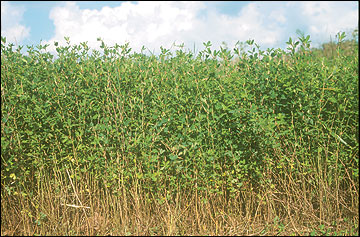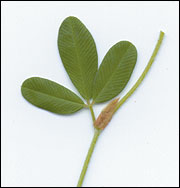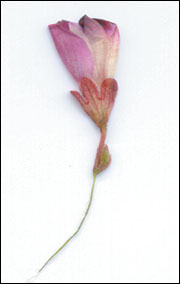Reviewed
Annual lespedeza (Kummerowia striata and K. stipulacea)
Legumes
Annual lespedeza is primarily used as a pasture legume, although it is sometimes cut for hay. It provides high-quality forage in midsummer when other cool-season grasses and legumes are struggling. It also grows better than other legumes on infertile or shallow soils. Like birdsfoot trefoil, it does not cause bloat. However, it is not problem-free. Its annual yield is lower than that of other legumes, and it does not have as broad a window of forage production. Korean types have proven susceptible to a number of foliar diseases. Annual lespedeza can be valuable in July and August.
 Annual lespedeza
Annual lespedeza
 Yield distribution of annual lespedeza in Missouri.
Yield distribution of annual lespedeza in Missouri.
- Origin: Eastern Asia
- Adaptation to Missouri: Statewide
- Growth habit: Semi-erect, annual.
- Leaf: Palmately trifoliolate, leaflet on a short petiole, easily visible veins. Lower leaves spread, upper leaves erect.
- Stems: Fine stems with hairs pointing down on K. striata and pointing upward on K. stipulacea.
- Stipules: Small for K. striata; large and prominent for K. stipulacea.
- Flowers: Flowers and sets seed in late summer and early autumn, florets are borne in short, axillary racemes; florets are reddish purple to white.
- Fertilization: No N needed if nodulated. Maintain 20 lb P/acre and 200 lb K/acre.
- Timing of production: 70 percent of annual production between June 15 and Aug. 31.
- When to begin grazing: Often based on the height of the grass in the mixture.
- When to cut for hay: Half to full bloom
- Lowest cutting or grazing height: 4 inches
- Fall management: Avoid severe grazing from Sept. 15 until seed is set. Lespedeza, annual (Kummerowia striata and K. stipulacea)

